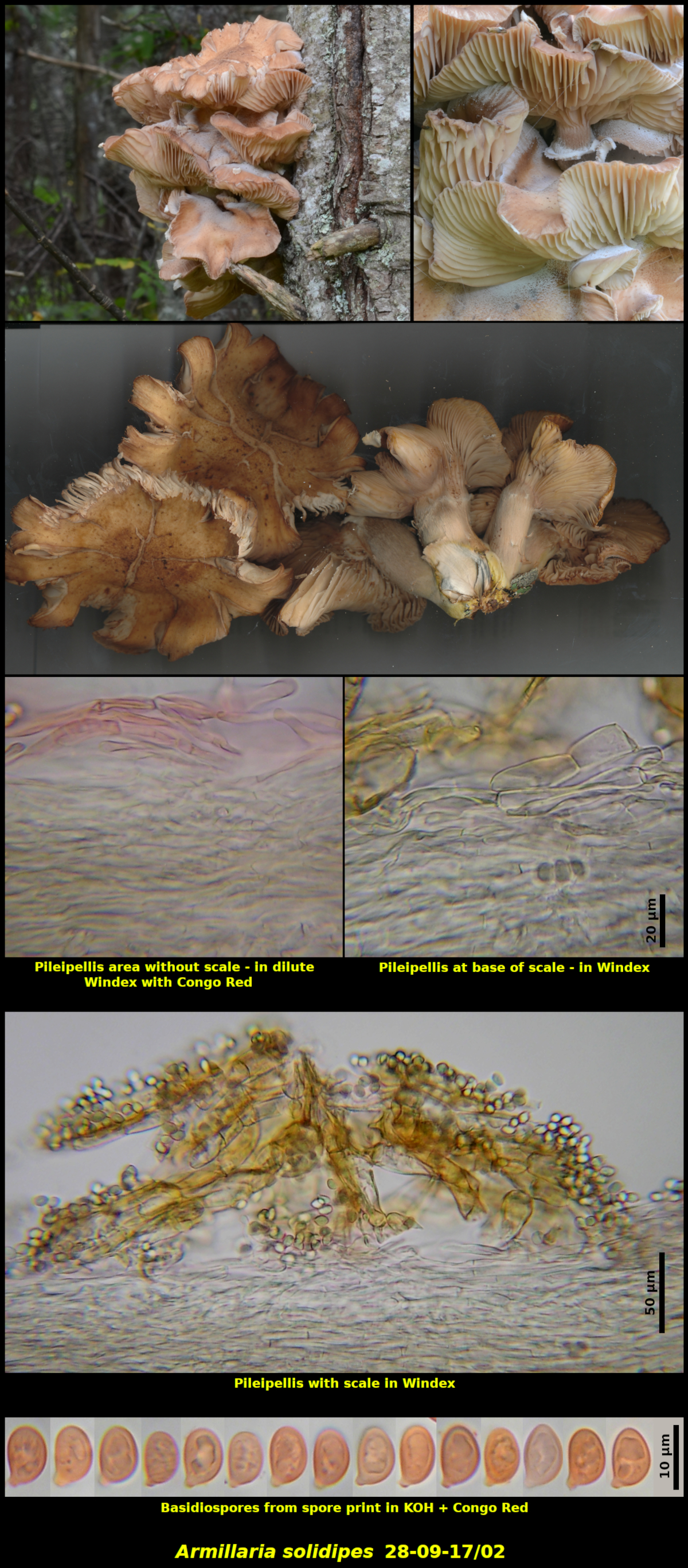Fleshy Fungi of New Brunswick >>
Armillaria solidipes
Armillaria solidipes Peck

Densely clustered on a dead standing trunk of Abies balsamea with bark still intact, senescent forest of Abies balsamea, Betula papyrifera and Sorbus americana – Little Lepreau, New Brunswick (28-09-17/02).
Basidiospores pale orange yellow (HSV30:05:100) in spore print, not white but a sort of cream colour, ellipsoidal to ovoid, smooth, unchanging in Melzer’s Solution, with walls staining readily in aqueous Congo Red, 8.0-10.8 x 5.3-6.1 µm, Q = 1.35-1.81 (average[37]: 8.5 x 5.8 µm, Q = 1.47). Basidia 4-spored, with a basal clamp connection. Hymenial cystidia poorly differentiated, present on both the sides and edges of the lamellae, filamentous, variously wavy and lobed. Pileipellis a cutis or slight ixocutis of narrow hyphae above a poorly defined subpellis, giving rise to scattered dark scales composed of broad dark brown radially encrusted hyphae, with all hyphae lacking clamp connections.
Unusual for a mushroom Armillaria solidipes causes a serious disease of living conifers. As in the photo above it forms large clusters of fruiting bodies on its hosts, producing prodigious numbers of airborne basidiospores.
Armillaria_solidipes is one of several species of its genus. It is recognized by is scaly pileus, annulate stipe and clustered growth on coniferous trees. The basidia with a basal clamp connection are also diagnostic. Before the groundbreaking work of Drs. James Anderson, Jean Berubé, Tom Volk and others in the late 20th century, most authors treated A. solidipes and at least eight other species as the single variable species A. mellea. We now have substantial genetic evidence that this "lumping" was incorrect. Tom Volk, on his excellent website, has produced a Key to North American Armillaria Species that is helpful in distinguishing these species. On our New Brunswick checklist, the inclusion of A. mellea is probably due to identifications using the older concepts, but it would be necessary to examine each of these collections to set the record straight. Armillaria_solidipes has been treated in much of the more recent literature as A. ostoyae, but A. solidipes is now generally accepted as the oldest and thus correct name for the species.
Photograph: D. Malloch (28-09-17/02).